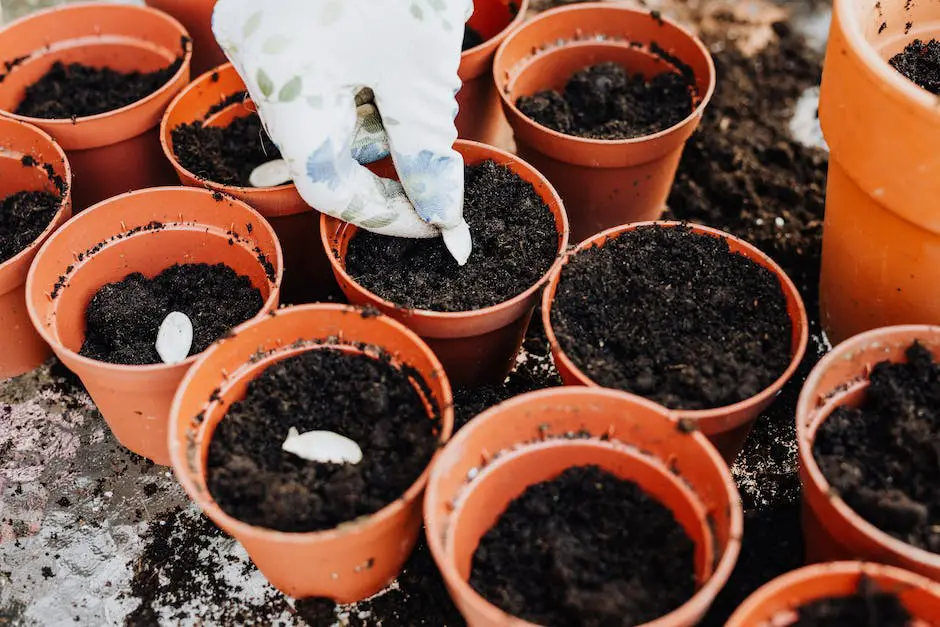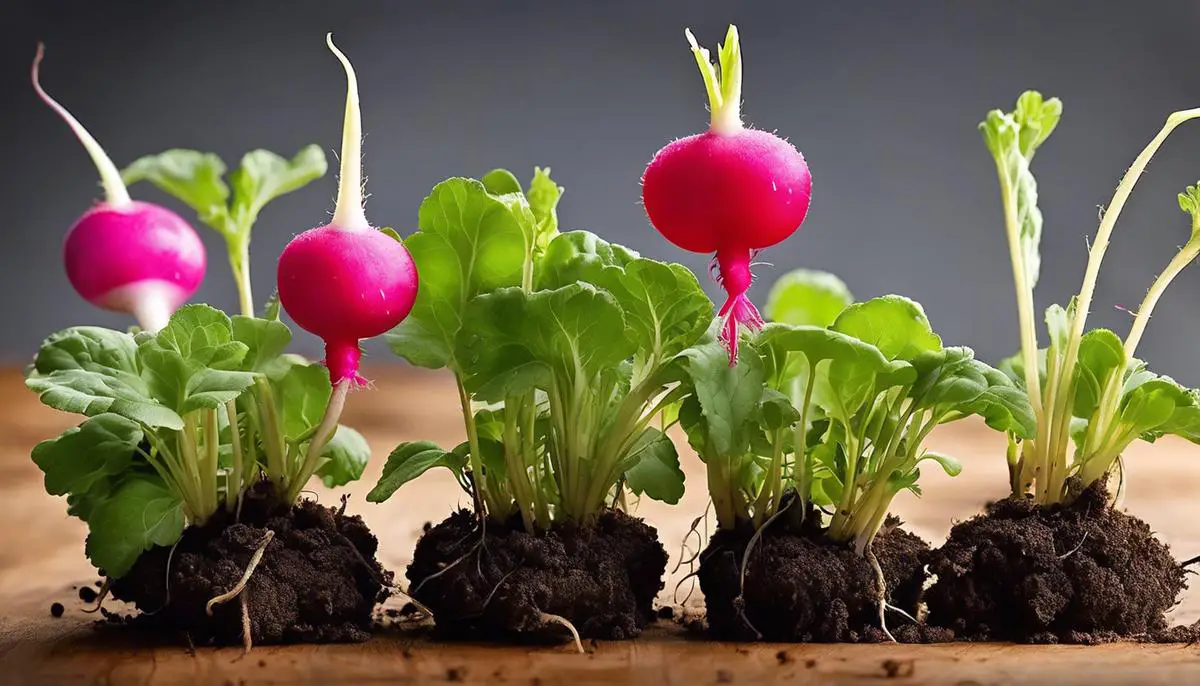Gardening enthusiasts and those with a penchant for fresh, homegrown produce are well aware that the quality of soil plays a crucial role in the success of their plantings. Radishes, with their crisp bite and peppery flavor, are a popular choice for both novice and seasoned gardeners due to their quick maturation and minimal space requirements. However, not all soils are created equal when it comes to fostering the growth of these small but mighty root vegetables. The ideal soil texture and composition for radishes is a component that cannot be overlooked if one aims to harvest perfectly plump and tasty specimens. This introductory exploration will shed light on the significance of well-draining, loose, and sandy loam soils, all of which contribute to an environment where radish roots can burgeon without constraint.
Soil Texture and Composition
Optimal Soil Composition for Cultivating Radishes: A Botanical Perspective
Abstract:
Reader Poll: What online courses would interest you?
Radishes (Raphanus sativus) are a widely cultivated root vegetable, valued for their crisp texture and piquant flavor, and utilized extensively in culinary practices globally. This article delineates the quintessential soil composition conducive to the thriving of radish plants, drawing upon empirical studies that illuminate their agronomic preferences.
Introduction:
The endeavor to grow radishes with exemplary vigor necessitates a nuanced understanding of soil science and plant physiology. Root vegetables, such as radishes, exhibit an exuberant sensitivity to the soil environment in which they reside, with the composition playing a paramount role in determining crop quality and yield.
Soil Composition:
The cultivation of radishes demands soil that is inherently loose and well-draining, allowing for facile root expansion and preventing waterlogging which can precipitate root rot. An ideal soil composition should consist of the following:
Subscribe to our newsletter!
- Textural Class: Sandy loam is the textual archetype, permitting unimpeded root penetration and adequate aeration. The sand component confers permeability, while the loam contributes to nutrient retention and soil structure.
- Organic Matter: A content of organic matter ranging from 2% to 5% is recommended to bolster the soil’s fertility and enhance its water-holding capacity. Incorporation of well-decomposed compost or aged manure promotes a conducive environment for radish growth.
- Soil pH: Radishes flourish within a pH range of 6.0 to 7.0. Slight deviations from neutrality are admissible, but excesses in acidity or alkalinity should be mitigated through appropriate soil amendments.
- Nutrient Content: Radishes are responsive to balanced fertilization. Nitrogen is essential for robust foliar development, while phosphorus and potassium favor healthy root formation. However, excessive nitrogen should be eschewed as this can lead to lush foliage at the expense of root development.
- Soil Temperature: The germination of radish seeds is favored at soil temperatures between 40°F and 70°F. Notwithstanding, it is noteworthy that radishes are a cool-season crop and exhibit optimal growth when the soil temperature does not exceed 65°F.
Conclusion:
The pathway to successful radish cultivation lies in the meticulous engineering of the soil environment to satisfy the biological exigencies of this crop. Adherence to the stipulated soil composition furnishes the radishes with the requisite conditions to manifest their potential, thus culminating in a bountiful and qualitatively superior harvest. Experimentation within the recommended parameters catalyzes advancements in agronomic practices, ultimately benefiting both the cultivator and consumer.

Soil pH and Nutrient Balance
The Influence of Soil pH on Radish Growth Dynamics: A Critical Appraisal
The interaction between soil pH and radish growth is a nuanced relationship that warrants meticulous attention. It is well-established that the pH level of soil, a measure of its acidity or alkalinity, can directly influence the bioavailability of nutrients necessary for the vegetative and reproductive phases of radish plants. In the crucible of academic scrutiny, a pivotal aspect to consider is how deviations from the optimal pH range affect the solubility of macro- and micro-nutrients, which are crucial for radish development.
Within the optimal pH range, generally acknowledged as 6.0 to 7.0 for radish plants, nutrients maintain an adequate level of solubility. This solubility is requisite for root uptake — the primary method by which radishes assimilate nutrients. A departure from this acidity or alkalinity spectrum can precipitate deleterious effects. An overly acidic soil (pH below 6.0) may lead to an excess of certain ions such as aluminum and manganese, which can be toxic to plants and impede their growth. In contrast, alkaline conditions (pH above 7.0) often result in the precipitation of phosphates, iron, manganese, and other trace elements, rendering them inaccessible to the plant and potentially stymieing development.
Investigation into specific nutrient dynamics reveals the indispensable nature of nitrogen, phosphorous, and potassium — the tripartite backbone of radish nutrition. Nitrogen, critical for foliar development, is most available in soil when pH hovers around the 6.0 mark. Phosphorous, essential for energy transfer and root growth, remains soluble and accessible in the slightly acidic to neutral pH range. Potassium, which aids in overall plant health and disease resistance, exhibits increased availability as pH approaches neutrality.
The presence and availability of micronutrients, such as boron, magnesium, and sulfur, should not be overlooked. These elements partake in a delicate balance within the soil matrix, with their solubility and uptake being influenced by the prevailing pH level. For instance, boron, pivotal for cell wall formation and reproductive growth, is more available in neutral to slightly alkaline soils, whereas magnesium and sulfur, key for photosynthesis and enzyme function, respectively, are better absorbed in a slightly acidic milieu.
As such, routine monitoring and adjustment of soil pH are tantamount to ensuring an environment conducive to robust radish growth. Soil amendments—such as the application of lime to increase pH or sulfur compounds to decrease it—can be judiciously employed to rectify imbalances and maintain soil conditions within the optimal range.
At the forefront of radish agronomy is the realization that soil pH acts not in isolation but in concert with other factors, including soil texture, structure, and organic matter content, to influence the vigour and health of radish plants. Interdisciplinary research continues to untangle the complex web of interactions inherent in soil science, with the end goal being to enhance the quality and yield of radish harvests in diverse agricultural settings.

The world beneath our feet is teeming with life and potential, holding the secrets to bountiful harvests and the satisfaction of self-sufficiency. As we delve deeper into the realm of home gardening and the science of horticulture, it becomes evident that the path to flourishing radishes hinges upon our understanding and manipulation of the soil they call home. Embracing the insights gleaned from recognizing the value of optimal soil pH, nutrient balance, and the harmonious dance of earthy elements will not only yield a cornucopia of radishes but also enrich our gardening experience with a deeper connection to the natural world. Let the cultivation of radishes be both a culinary delight and a lesson in the art of attunement with Mother Nature’s intricate tapestry of growth and renewal.

